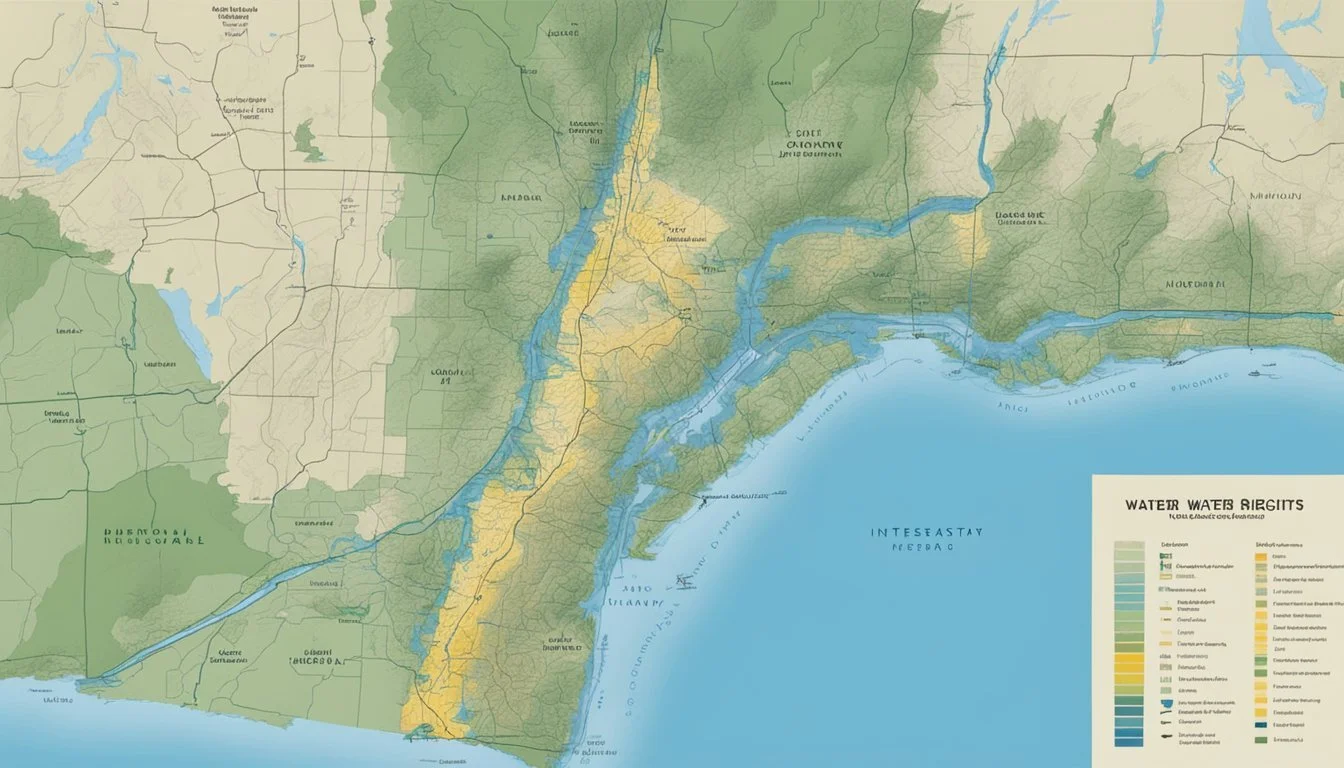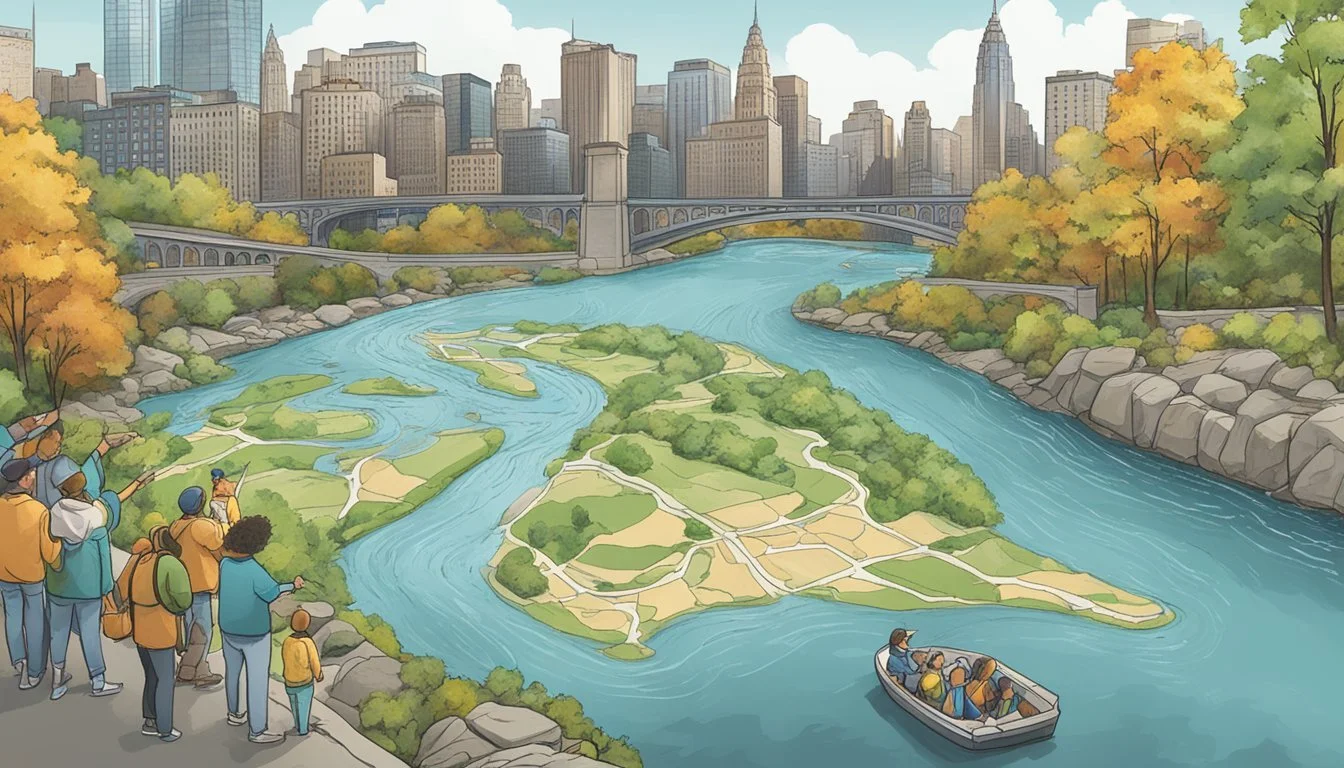Water Rights in New York
Navigating Policies and Ownership
Water rights are a crucial yet complex element of New York's legal and environmental landscape. As a densely populated state with a significant industrial presence, New York's management of this essential natural resource is subject to various regulations and oversight mechanisms. Water is intrinsically linked to the well-being of both the state's residents and its diverse ecosystems, making the governance of water rights vital to ensuring sustainable access for all stakeholders.
In particular, the divergent interests of municipal, private, and individual water users demand careful consideration and balancing by regulatory bodies. The scope of these rights involves not only the consumption and use of water but also the conservation and maintenance of water quality. Participation in the management of water resources is fully embraced, with recent initiatives allowing New Yorkers to strengthen their legal right to clean water.
Legislation surrounding water utilities in New York establishes distinct protocols for different types of suppliers. Large private water companies are regulated by the Public Service Commission and adhere to certain consumer protection statutes, reflecting the state's proactive approach to safeguarding its water supply. Furthermore, recent constitutional amendments highlight the state's commitment to ensuring that the right to clean and safe water is explicitly recognized, signifying the evolving nature of water rights in both legal and civic discourse.
Historical Context of Water Rights in New York
Water rights in New York have evolved significantly over time, influenced by common law principles and legislative developments. This historical progression has shaped how water is regulated and managed today.
Common Law Origins
Initially, water rights in New York were governed by common law principles, notably the doctrine of riparianism. This system originated in England and simply stated, it provided that the landowners adjacent to water bodies had the right to make reasonable use of the water. In practice, riparian rights were determined by a land's proximity to water, prioritizing the rights of those closest to the source.
Development of Water Law
As New York's population grew and the state industrialized, the simple principles of riparianism proved insufficient. The 20th century saw the introduction of water law within the framework of broader environmental law. Legal codifications began to replace the common law standards, most notably through Article 15 of the New York Environmental Conservation Law, which provided a more structured approach to water use, allocation, and conservation.
Constitutional Framework and Amendments
This section outlines the integration of environmental rights into the legal framework of New York State through constitutional amendments, specifically focusing on the inclusion of the Green Amendment and the passage of Proposal 2.
Environmental Rights in the State Constitution
New York State has taken significant steps to embed environmental protections within its legal structure. The New York State Constitution now encompasses provisions that guarantee fundamental environmental rights to its citizens. This transformative act elevates the importance of a clean environment to the same level as other protected civil liberties.
Green Amendment and Proposal 2
The progression toward incorporating environmental rights into the New York State Constitution materialized through the enactment of the Green Amendment. This amendment was further solidified when Proposal 2 received approval from New York voters. Proposal 2 mandated the inclusion of the right to clean water, clean air, and a healthful environment in the constitution's Bill of Rights, demonstrating New Yorkers' valuation of environmental health as a foundational aspect of society.
Legislative Developments
In recent years, New York has seen significant strides in enhancing water protections through legislative action. They encapsulate both the broadening of environmental rights in the state constitution and the introduction of new laws aimed at safeguarding water resources.
Environmental Conservation Law
Senate Majority Advances Legislation To Improve Water Protections exemplifies the legislature's commitment to addressing water concerns. This legislation moves to rectify gaps in the Environmental Conservation Law by mandating testing of certain chemicals in drinking water, therefore extending protection to an additional 2.5 million residents. The importance of this action lies in the closure of previously existing loopholes and the bolstering of water quality regulations. The Emerging Contaminant Monitoring Act is one piece of implementing legislation that is instrumental in this effort.
State Environmental Quality Review Act (SEQRA)
SEQRA's processes have also been strengthened to incorporate environmental considerations into a wider array of governmental decisions. The legislature plays a pivotal role in ensuring that SEQRA is reviewed and updated to reflect the state's evolving environmental objectives. Moreover, through the integration of public opinion and scientific research, SEQRA adaptations drive New York towards a more thorough assessment of environmental impacts from proposed projects. This shows a transparent and comprehensive way that the state approaches the interconnection of environment and infrastructure planning.
Water Rights and Environmental Policy
In New York, water rights and environmental policies intertwine to ensure the sustainable management and protection of the state's water resources. These provisions are grounded in law and reflect a commitment to address both local water needs and broader climate concerns.
Regulated Riparianism in New York
New York State employs a regulated riparian system for water rights management. This system recognizes the rights of landowners who have properties adjacent to water bodies, granting them the use of water for reasonable and beneficial purposes. However, New York's approach also involves state regulation to balance competing interests and protect water resources for its citizens. The Department of Environmental Conservation oversees water withdrawals, requiring permits for significant diversions and ensuring sustainable use in accordance with environmental standards.
Right to Water and Climate Change Policies
In response to the pressing challenges of climate change, New York has taken proactive measures by embedding the right to clean air and water within its state constitution. This right serves as a mandate for the government to create and enforce policies that preserve the health of the environment for current and future generations. Climate change policies in New York are further reinforced by initiatives that focus on reducing greenhouse gas emissions, promoting renewable energy, and adapting infrastructure to withstand climate-related impacts, all while ensuring access to clean and safe water.
Protection of Water Resources
In New York State, water resources are safeguarded through robust regulatory programs and laws that address pollution control and assign specific duties to landowners, ensuring the long-term preservation of these vital ecosystems.
Clean Water Enforcement
New York actively enforces laws to maintain the purity of its water bodies, combatting pollution vigorously. The state's Protection of Waters Program sets forth regulations to preserve water quality, ensuring that actions are in harmony with public health and social, as well as economic development objectives. Entities found violating clean water statutes are subject to legal actions to rectify any harm caused to the water resources and prevent future incidents.
Water Infrastructure and Landowners Responsibilities
Infrastructure Management:
Maintenance: Regular checks and necessary updates to public water systems.
Upgrades: Implementation of advanced technologies to deal with emerging contaminants.
Landowners' Role:
Protection Duty: Landowners are expected to prevent pollution of adjacent waterways.
Compliance: Adherence to state laws, such as those laid out in New York Environmental Conservation Law Article 15, is mandatory to conserve water resources.
New York's approach interweaves environmental protection with the responsibilities of landowners, and the state's water infrastructure is a testament to governmental actions ensuring the welfare of its water resources.
Governmental Initiatives and Citizen Involvement
New York State has made significant strides towards securing environmental health through well-concerted governmental actions and active citizen involvement. Enshrining environmental rights within the state's Bill of Rights and initiating programs to protect water sources, are at the forefront of collaborative efforts between the government and the populace.
State Policy on Protecting Water Resources
In an unprecedented move, New York voters passed an Environmental Rights Amendment to the state’s Constitution, making access to clean water a fundamental right. This historic addition asserts that "Each person shall have the right to clean air and water, and to a healthful environment." Proactive measures include the development of the Drinking Water Source Protection Program (DWSP2), whereby municipalities collaborate with governmental entities like the Department of Environmental Conservation (DEC) to safeguard drinking water sources for their communities.
Environmental Harms and Government Action
When faced with environmental harms, New York has displayed robust government action. The state has responded to threats against environmental health by providing citizens the tools necessary to hold their government accountable for the protection of their environmental rights. This extends the scope of citizen power in environmental policymaking and enforcement, as indicated by the passage of the constitutional Environmental Rights Amendment. The legislation serves as a framework for citizens and governmental bodies to combat environmental degradation and ensures that the Bill of Rights is upheld in the face of adversities to water and environmental health.
Interstate and Regional Considerations
When discussing water rights in the context of New York, interstate and regional considerations play a pivotal role due to the state's geographic position and shared water resources. These issues are particularly relevant when considering the legal frameworks that govern water rights and resource management across state lines.
New York's Water Rights and Pennsylvania
New York shares a water boundary with Pennsylvania, primarily through the Delaware River Basin, which falls under the purview of the Delaware River Basin Commission, an interstate body. This commission ensures that water apportionment is managed equitably across state boundaries. Pennsylvania and New York have to navigate their water laws collaboratively, focusing on both water quantity and quality, to maintain a balance between the two states' various uses for the river, such as supply for drinking water, industry, and environmental conservation.
Western States' Water Laws
Differing significantly from New York's water rights system, western states such as California and Montana are generally governed by the doctrine of prior appropriation, where water rights are based on a "first in time, first in right" principle. This approach, born out of the Gold Rush era's necessity, contrasts with the riparian rights system predominant in New York. In the riparian approach, water rights are tied to the ownership of land bordering a watercourse, placing an emphasis on reasonable use shared among landowners. The arid climate of the West necessitates these states to have distinct legal stipulations to allocate the scarce water resources, making interstate water agreements essential for conflict resolution and water management.
Challenges and the Future of Water Rights
In New York, the discourse around water rights hinges on the capacity to sustain a healthful environment alongside legislative agility to address emerging challenges.
Healthful Environment as a Fundamental Right
New Yorkers are recognizing clean air and a healthful environment as intrinsic rights, essential for wellbeing. The state's constitution is evolving to enshrine these elements, reinforcing the ideology that access to unpolluted water is a fundamental right. This shifts the onus onto governmental bodies to proactively safeguard these rights, employing rigorous standards and timely interventions.
The Promise of New Legislation
With the momentum of new bills, there is a promise of strengthened water protections. It is anticipated that future governmental actions will expand water testing for contaminants and enhance the state's infrastructure. By doing so, New York aspires to preempt crises like those in Hoosick Falls, ensuring a safer aquatic environment for all residents. Legislations fueled by the backing of scientific bodies, such as RAC, are critical gears turning towards a secure water future.
Frequently Asked Questions
Understanding water rights in New York State involves recognizing the specific legal terms and how these rights influence land use and ownership. The answers below address common questions about water rights in the region, shedding light on how laws apply to various water bodies and land types.
What is the definition of riparian rights in New York State?
In New York State, riparian rights refer to the system that grants individuals who own land bordering a natural watercourse access to and use of the water. These rights allow property owners to make reasonable use of the water, as long as it does not affect the rights of other landowners.
How do littoral rights affect property ownership along New York's lakes and seas?
Littoral rights are a type of water right given to landowners whose property is adjacent to a body of water, such as a lake, sea, or ocean. These rights generally allow the owner to use the water for recreational purposes, access to navigation, and sometimes the right to wharf out to navigable depths.
Are property owners allowed to own creeks or streams on their land in New York?
In New York, creeks or streams are typically considered to be public waterways. Landowners may have rights to the waterflow but do not own the water bodies themselves. Ownership may extend to the center of the creek or stream, but the water is subject to public trust and state regulations.
To what extent do property lines extend into bodies of water such as lakes or rivers in New York?
Property lines in New York may extend to the center of a water body such as a river or creek. However, the extension is subject to the rights of public use and navigation under the Public Trust Doctrine. Ownership boundaries for lakes can differ, often extending only to the high water mark.
How does New York State law regulate the ownership and use of water?
New York State law regulates water use through permits and legal frameworks, such as the riparian doctrine, ensuring that water resources are allocated fairly and sustainably. The Department of Environmental Conservation oversees these regulations, focusing on both individual water rights and the collective interests of the public.
What are the common legal disputes related to water rights in New York?
Legal disputes over water rights in New York often involve disagreements between property owners over access to watercourse usage and water withdrawal rights. Conflicts may also arise from environmental concerns, such as pollution, and the competing interests of residential, agricultural, and commercial stakeholders.







